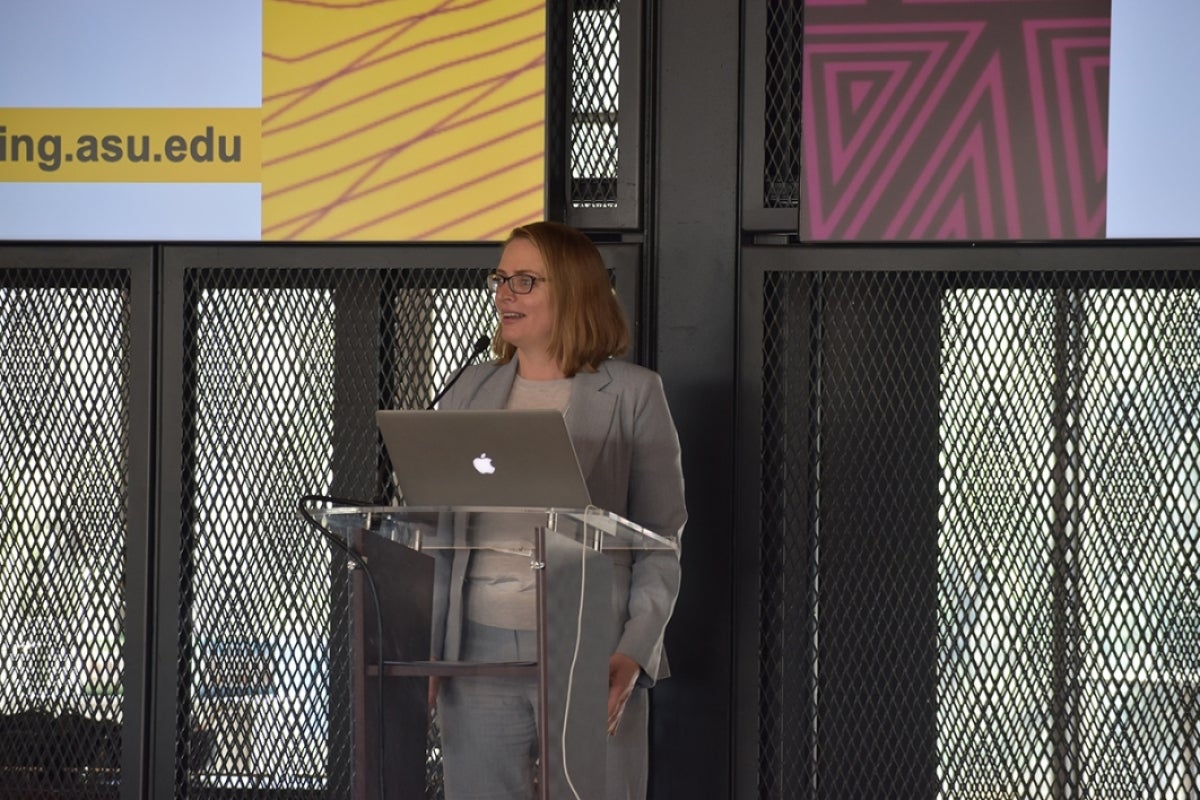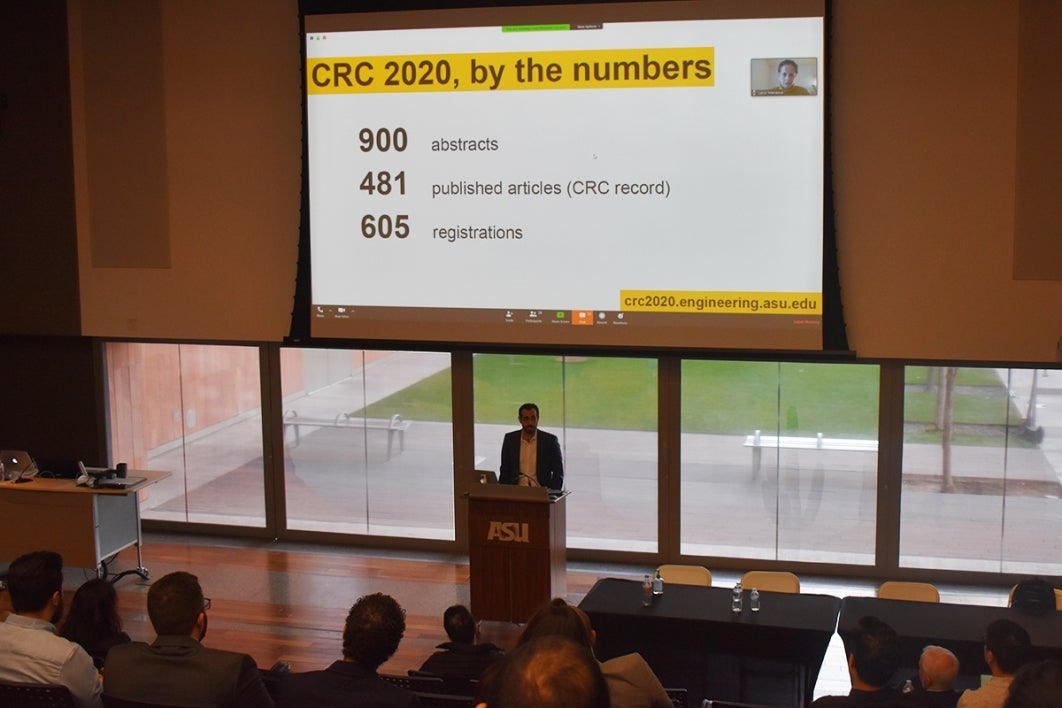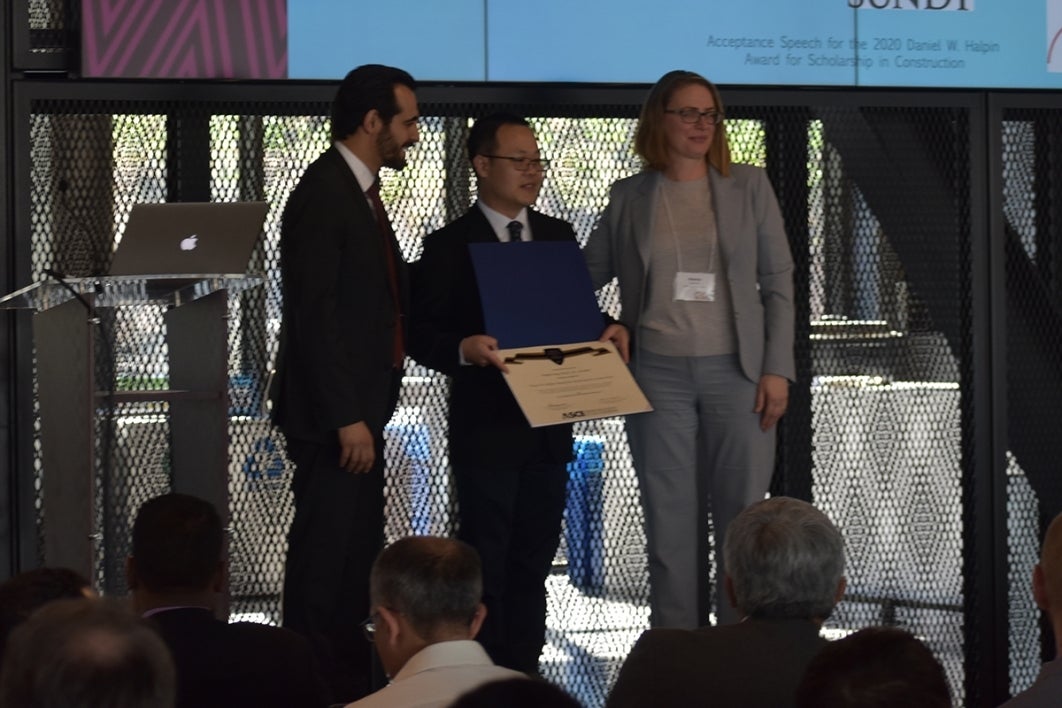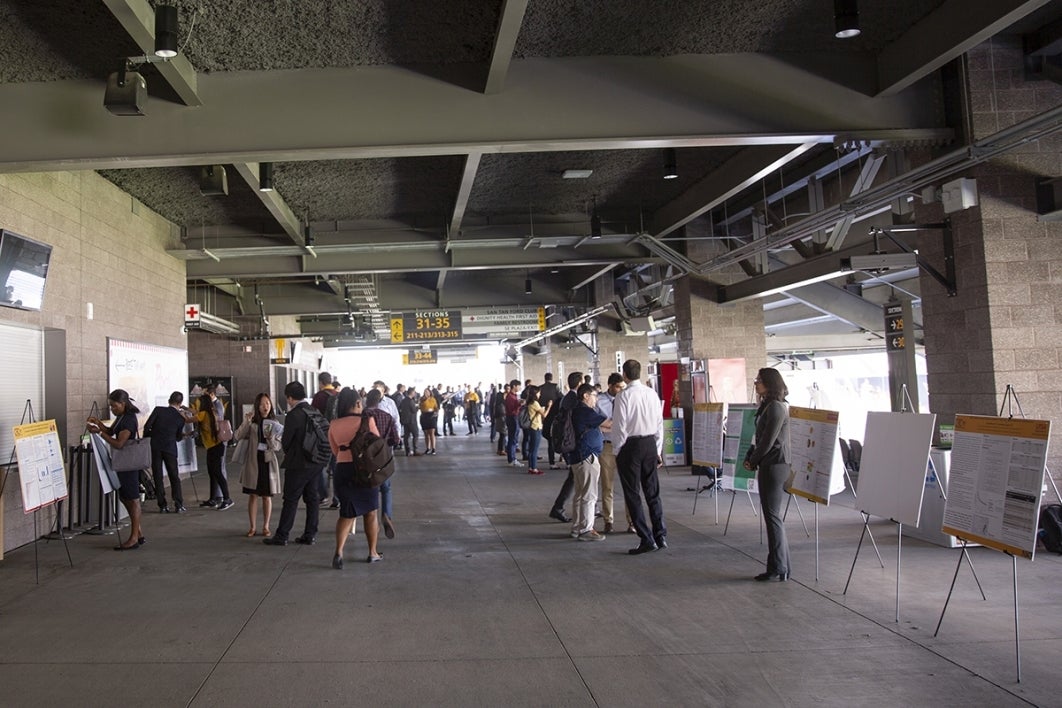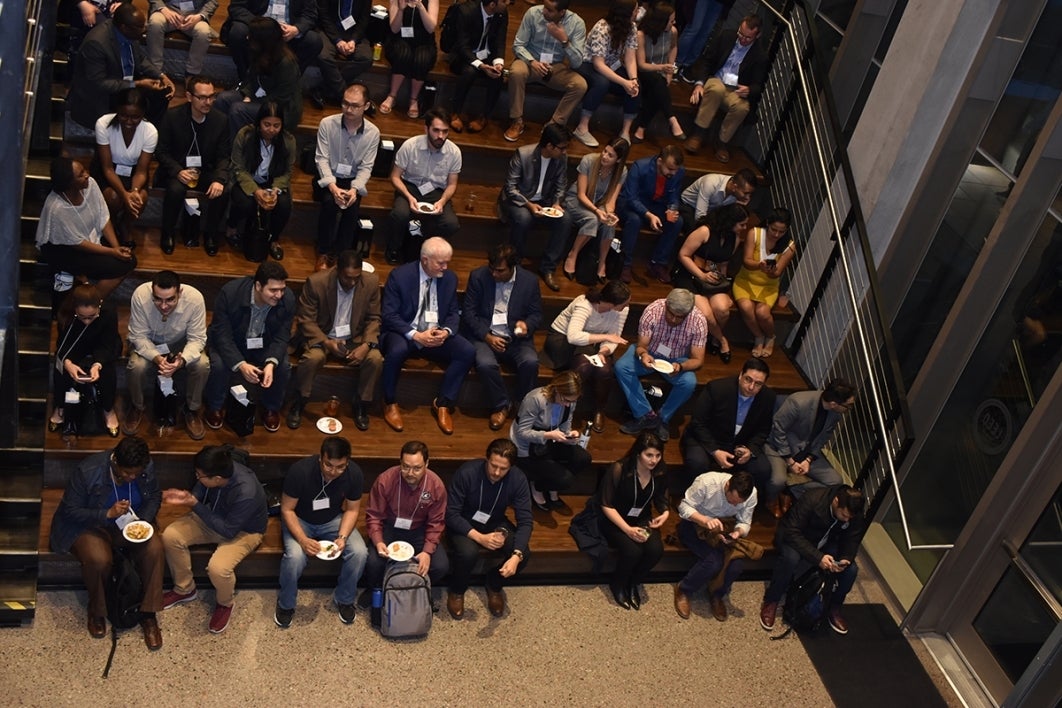Climate change, alternative energy, autonomous vehicles and high-tech construction systems are changing the way the built environment — the man-made infrastructure in which we live and work — is being planned by today’s engineers and builders.
The technologies that will identify and solve the challenges of future cities were the subjects of presentations, workshops and panel discussions at the American Society of Civil Engineers (ASCE) Construction Research Congress held at Arizona State University this week, and hosted by the Del E. Webb School of Construction.
While smart cities and mega cities are already being built, cities of the future need to meet broader societal needs.
For example, for those who will be affected by climate change, like 60% of the global population that live in coastal areas vulnerable to rises in sea levels, floating city planning is one of the solutions being proposed by the ASCE in its "Future World Vision: Infrastructure Reimagined" project.
“How will our world look in 25 years?” asked Katerina Lachinova, director of the ASCE Construction Institute during the conference as she addressed the challenges of construction research and innovation needed to transform society. “Fifty years? One hundred years?”
Lachinova identified five types of future cities in which designers and constructors will depend on engineering knowledge to develop computer modeling tools to design the infrastructure of the future, including a frozen city and an off-world city.
Vineet Kamat, a professor of civil and environmental engineering at the University of Michigan, delivered a virtual keynote presentation on how construction building information modeling uses AI, big data and virtual reality.
Kamat’s video illustrated how robots can be preprogrammed to conduct small- and large-scale construction and fabrication projects, and the importance of using augmented reality to locate buried utilities.
“On a utility project, an operator cannot see beyond the location markings, which are destroyed within a few minutes when the digging commences,” he said. “Augmented reality provides real-world backgrounds that affords real-time visualization using geospatial data analysis and 3D geometric modeling.”
The theme of the conference “Construction Research and Innovation to Transform Society," addressed how the construction industry, including civil, industrial, building and cyber infrastructure engineers, must evolve to support sustainable, resilient communities of the future.
“This event has brought together a global network of construction stakeholders who shared the state-of-the-art in research and applications for tackling the challenges of the 21st-century construction industry,” said Mounir El Asmar, conference chair and associate professor in ASU’s School of Sustainable Engineering and the Built Environment.
The conference received 900 abstracts, published 481 peer-reviewed articles (a CRC record) and had participants from 24 countries with presentations in six primary tracks including infrastructure systems and sustainability; health, safety and workforce; computer applications and simulation; and advanced technologies and data analytics.
In the infrastructure systems and sustainability track of the conference, topics ranged from designing and sustaining railway and other transit systems, to waste management at construction sites, to reducing the hazards of sustained power outages.
The materials track offered insights on prefabricating construction components, including using sensors to manage the manufacturing process, then tracking their whereabouts on the road to the building site.
Consistent through all of the tracks was the expanding use of data analytics, artificial intelligence and virtual reality — tools not traditionally available in the construction worker’s toolbox, noted El Asmar.
For example, Abdullah Alsharef, a graduate research assistant from North Carolina State, said that e-learning tools, immersive virtual environments and game technology-based models are key to developing new, effective worker safety and training methods.
“There’s a perception that training increases costs,” Alsharef said. “But research shows that in a competitive market, the best high-skilled workers are attracted by comprehensive training programs.”
The CRC is an international conference held in the U.S. during even years, with a similar conference in Canada during odd years.
“The amazing networking opportunities and intellectual exchange between hundreds of experts pushing the boundaries of practice and creating new construction knowledge add to the global impact of this congress,” El Asmar said.
“Despite the barriers presented by the unfortunate coronavirus situation, we had a very successful sharing of insights, practices and visions of the future. It was a true honor to host CRC 2020 at ASU and we look forward to CRC 2022 hosted by Virginia Tech in Washington, D.C.,” El Asmar concluded.
The CRC 2020 leadership committee includes ASU professors El Asmar, Kristen Parrish, Samuel Ariaratnam, G. Edward Gibson Jr., Anthony Lamanna, Pingbo Tang, David Grau, Steven Ayer, Wanda Dalla Costa, conference coordinator Lisa Hogle and student co-chairs Namho Cho and Zhe Sun, joined by about 40 track and session chairs from various universities internationally, and a number of ASU staff, faculty and student volunteers.
Top photo: Virtual reality for design, construction and safety projects was common element of presentations during the Construction Research Conference at ASU this week. ASU Graduate Research Associate Kiernen Smith checks out the VR tech that University of Florida PhD Candidate Ricardo Eiris incorporated into his poster presentation. Photo by Erika Gronek/ASU
More Science and technology

Lucy's lasting legacy: Donald Johanson reflects on the discovery of a lifetime
Fifty years ago, in the dusty hills of Hadar, Ethiopia, a young paleoanthropologist, Donald Johanson, discovered what would become one of the most famous fossil skeletons of our lifetime — the 3.2…

ASU and Deca Technologies selected to lead $100M SHIELD USA project to strengthen U.S. semiconductor packaging capabilities
The National Institute of Standards and Technology — part of the U.S. Department of Commerce — announced today that it plans to award as much as $100 million to Arizona State University and Deca…

From food crops to cancer clinics: Lessons in extermination resistance
Just as crop-devouring insects evolve to resist pesticides, cancer cells can increase their lethality by developing resistance to treatment. In fact, most deaths from cancer are caused by the…

